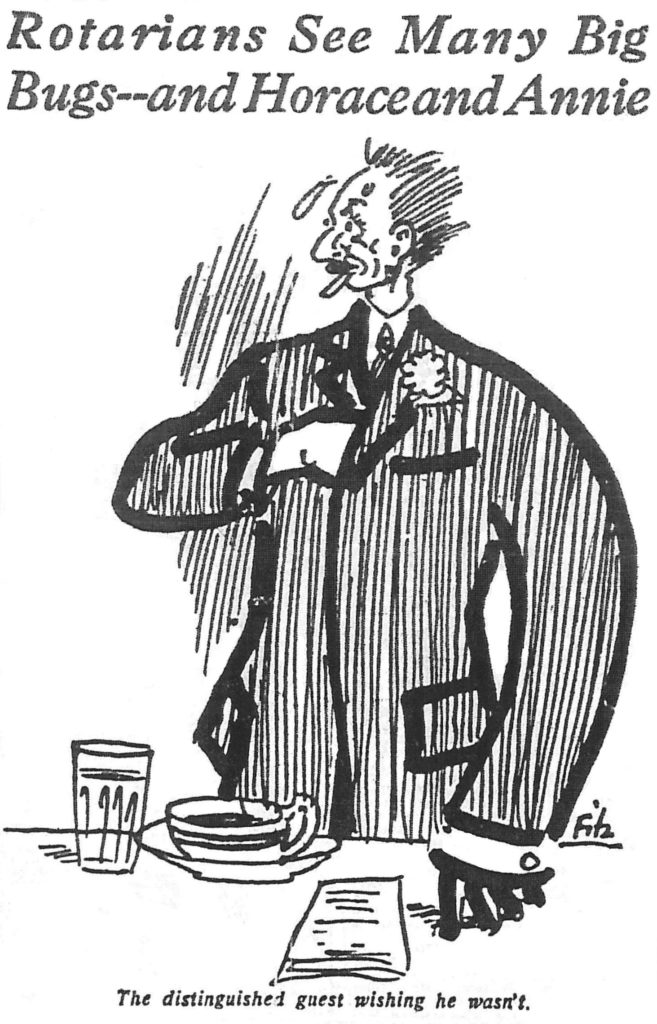After the Armistice was signed on November 11, 1918, James Fitzmaurice rallied his cartoon troops for a new set of challenges, two of which were predictable outcomes of the war: the peace process that would consume international affairs for the next year; and the return to “normalcy” for the war-weary inhabitants of British Columbia. Both the achievement of a “just peace” and the transition to post-war life were difficult, incomplete, and somewhat disappointing, and Fitzmaurice cartoons through 1919 faithfully documented these developments and public hopes and reactions through this turbulent time.
THE EFFECTS OF WAR AND THE HOPES OF PEACE
When the fighting stopped in 1918 – and historians remind us that fighting did continue in some areas of the world and began afresh in others – there was great joy and even more relief. But there was worry as well. The Great War had lived up to its recently adopted name. What began as a regional conflict in Eastern Europe would eventually spread to Asia, Africa, the Middle East, and islands in the Pacific. Military participants would come from over 30 countries. Nearly 15 million people lost their lives in the war, and of those who survived some 30 million returned with injuries, perhaps a quarter of whom would be permanently torn and broken both physically and mentally.
The map of Europe, the Middle East, and much of Asia and Africa was also ripped apart as the war toppled governments and undermined entire societies bottom to top. Gone was the Russian monarchy and the Austria-Hungarian empire – both became engulfed in revolution and the disintegration of regimes and political systems. The eight hundred year old Ottoman Empire, with its feet in both Europe and the Middle East, had begun to crumble before the fall of 1918 and would soon be dissected through diplomatic actions and national movements. New nations, some of which were resurrected from the distant past like Poland, Latvia, Lithuania, Estonia, appeared as the war ended, while the newly-created Yugoslavia and Czechoslovakia saw life for the first time. The pace of geo-political change was breathtaking. The greatest worry, at least to leaders in the Allied countries, was the spread of social revolution, or ‘bolshevism’ in its Russian form, to the most devastated areas of Europe. German social stability was the greatest concern. The newly-established German republic lay vulnerable to revolutionary and reactionary groups in the months and years after the war. The Allied peace-makers who arrived in Paris in December 1918 to bring a formal end to the war had a lot on their plates.
There is not space here to discuss all of the salient aspects of the year-long Paris Peace Conference that began in that city on January 18, 1919. Several generations of commentators have reviewed and interpreted the enormously important impacts of the conference, and none better than Canadian historian Margaret MacMillan in her revisionist study Paris 1919: Six Months that Changed the World. Among other conclusions, MacMillan tries to dispel the persistent belief that the terms of the peace agreements were botched by a group of quarrelling, short-sighted, and self-serving politicians who, instead of building a lasting peace, instead ensured the conditions necessary for the Second World War. MacMillan presents a more historically empathetic view of the “peacemakers,” suggesting that the challenges faced by all the participants, but particularly the “Big Three” – American president Woodrow Wilson, French Prime Minister George Clemenceau, and British Prime Minister David Lloyd George – were overwhelming and unprecedented. The peace and reconciliation process would have been much easier had it been attempted immediately after the armistice when German defeat was more obvious, when Allied military might could still be used as a threat, when a unity of purpose characterized the members of the Entente, and when local and regional rivalries was still contained by war conditions. “The Allies,” writes MacMillan “could have imposed almost any terms they wanted.”
However, by the spring of 1919 conditions had changed. The diplomats were handed the impossible task of settling the world’s problems in a fluid and unpredictable context of social revolutions, ethno-national insurrections, a contradictory hunger on the part of the populations in Allied countries to “make Germany pay” while engineering a lasting peace, and a Germany which did not believe it had started the war – or lost it. While each leader came to Paris with a different set of goals and all were eventually forced by circumstance to compromise their ideals, early on there was a consensus that the conference would focus on punishment, payment, and prevention. Beyond those general aims, MacMillan argues, was disagreement.
A DAY AT THE PEACE CONFERENCE
The images Fitzmaurice produced on the Paris Peace Conference reflected, and likely reinforced in the minds of local readers, the popular view that Germany was the cause of the war, of all postwar problems, and that Germany should pay for that dearly.
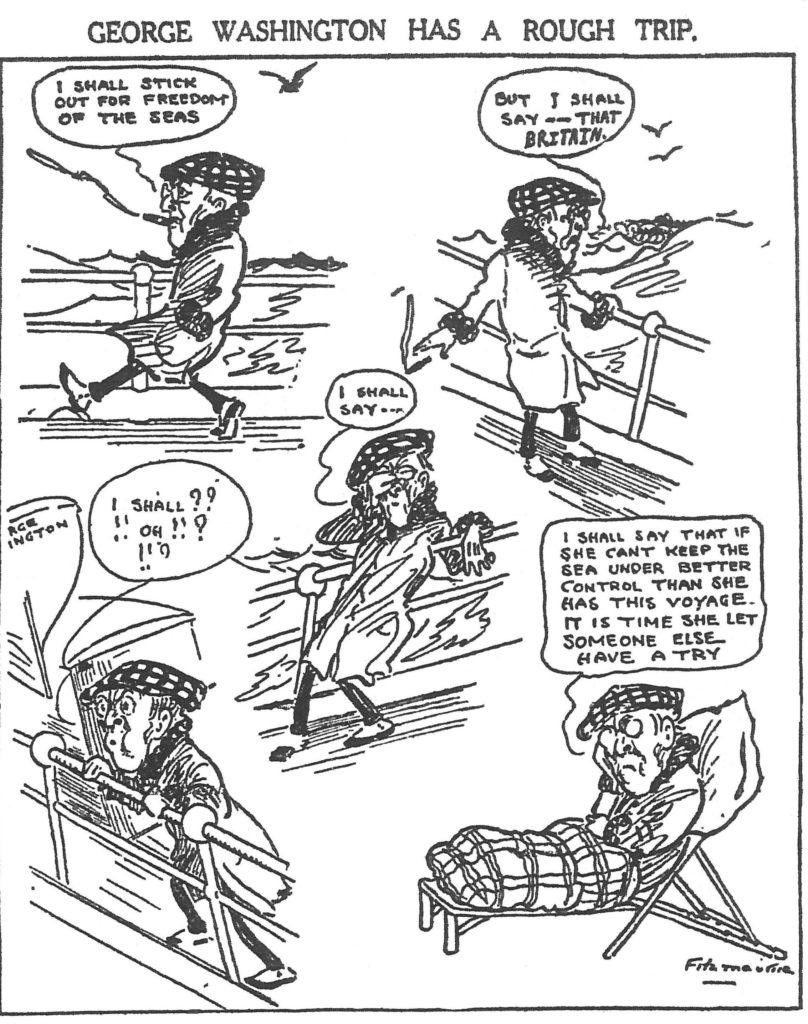
Figure 1: George Washington has a Rough Trip
Fitz began his series of cartoons on the peace conference by following Woodrow Wilson to Europe. In “George Washington has a Rough Trip” (Figure 1), Fitz documents the president’s voyage to Europe in early December on the American troop transport, the USS George Washington. Fitzmaurice portrays Wilson on deck ruminating on “Freedom of the Seas,” one of the Fourteen Points Wilson proposed a year earlier as a summary of American war aims and a set of conditions to end the war and engineer world peace. Along with the liberal ideals of free trade and freedom of navigation upon the seas, Wilson’s Fourteen Points emphasized principles of open and transparent diplomacy, representative democracy, national self-determination, a radical reduction in military armaments, and an international organization – a League of Nations – “for the purpose of affording mutual guarantees of political independence and territorial integrity to great and small states alike.”
Historians have been largely critical of Wilson’s liberal idealism, emphasizing its internal contradictions, its underlying support for capitalist expansion, and the myopically American character of the principles. All historians agree that the Fourteen Points were ultimately impractical and that the time was not right for such sweeping liberal reforms. Still, Wilson’s optimism appealed to many. Those who had lived through the devastation of war in Europe saw great hope in Wilson’s pronouncements; the American president was greeted with cheering crowds on his arrival in France in mid-December. Conversely, German officials embraced Wilson’s reforms – they hoped for the more moderate set of treaty terms in Wilson’s framing of peace and reconstruction as a general condition of international relations, not retribution. For their parts, however, Lloyd-George and Clemenceau believed the Points to be impractical, unspecific, and doomed to failure – and both were in a strong position to carry out their goals.
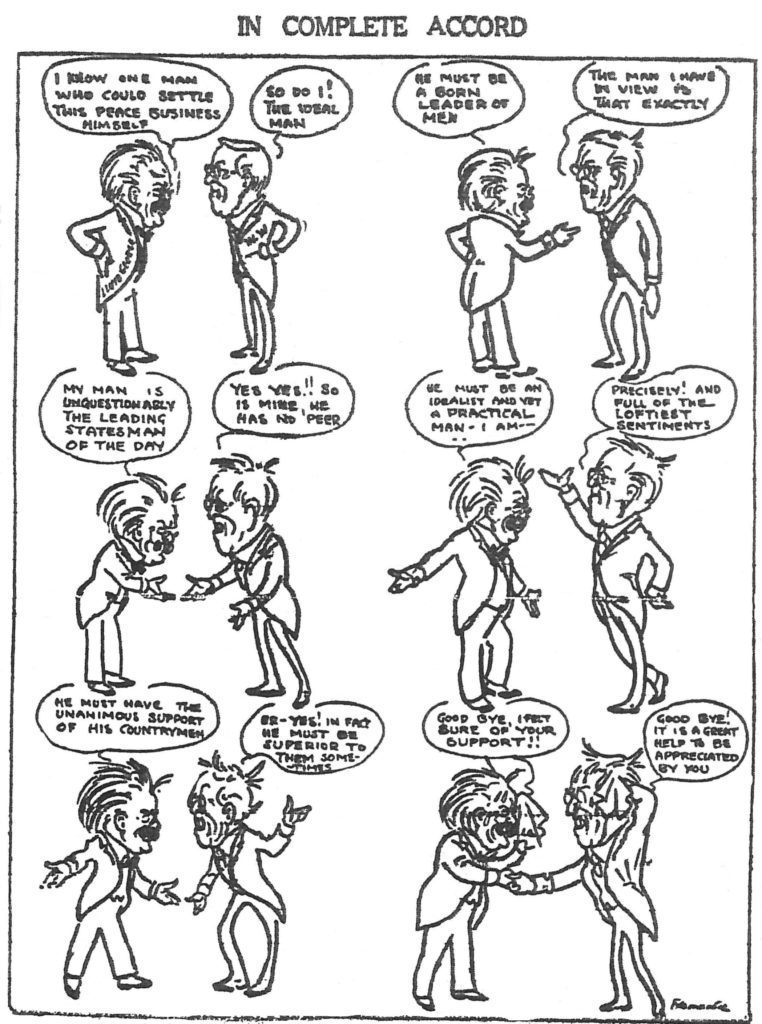
Figure 2: In Complete Accord
Once the conference was under way, Fitzmaurice concentrated on the main leaders, which began as a Council of Ten, and soon was paired down to the “Big Four,” Wilson, Lloyd-George, Clemenceau, and Italian prime minister Vittorio Orlando. Orlando was soon pushed to the margins and most of the key decisions were made by the American, British, and French leaders. Sharing the widespread optimism for a quick and retributive process, Fitz emphasized what he and his readers believed was a spirit of unity, particularly between Wilson and Lloyd-George.
In the cartoon “In Complete Accord” (Figure 2), we see an ironic take on that unity as the British and American leaders outline, unknowingly, the key features of leadership needed for a successful peace process. The cartoon builds its humour on the conceit and arrogance of both leaders, but the image never questions the hope of a fundamental consensus between Britain and the United States.
That sense of solidarity continues with “In Perfect Accord on the Main Points” (Figure 3), from late January 1919. After cataloguing some of the developing problems that complicated the peace process, Wilson and Lloyd-George confidently reveal their harmony of interest. “And of course if they will leave it up to us,” declares Wilson, “we can settle everything all right in time.” Lloyd-George agrees, “There is no doubt of that at all! Just leave it up to us.” However, Fitz was wrong. Significant differences in aims and means separated the main Allied leaders at the peace conference. Margaret MacMillan argues that each leader brought a mixture of personal world view, national interests, and a sensitivity to electoral politics at home that put them in conflict. The necessary compromises that emerged from the conference would only be achieved through a contested and lengthy process of give and take.
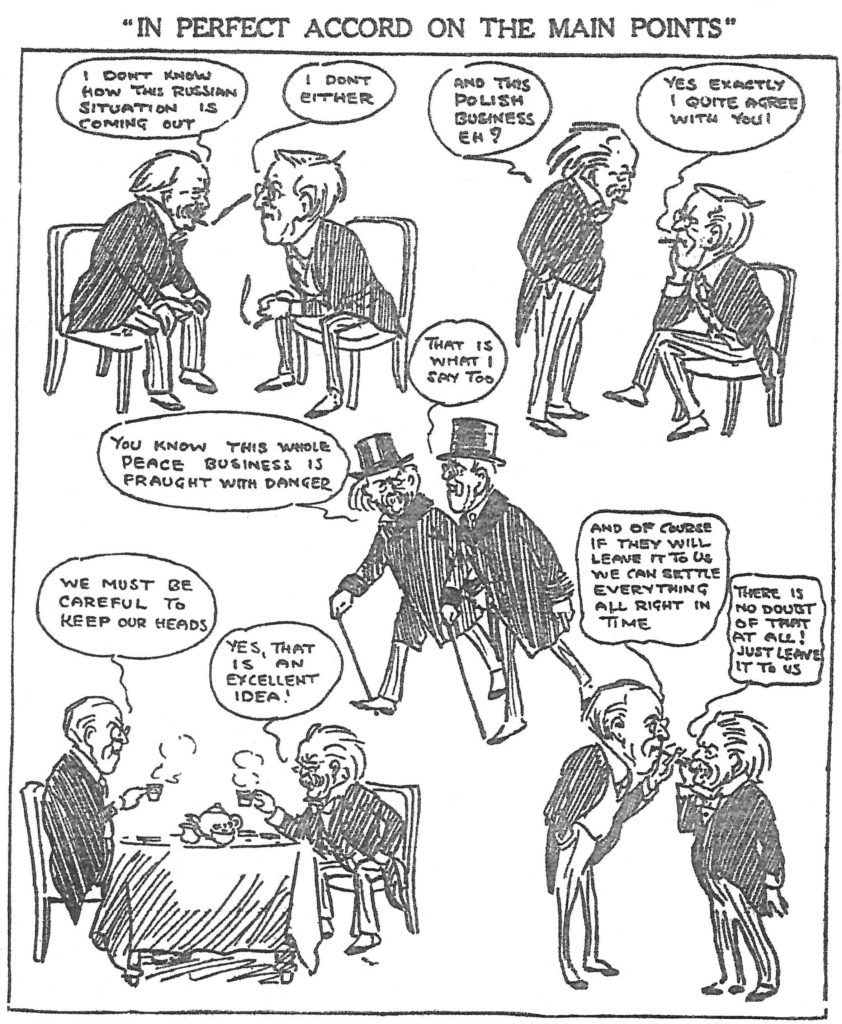
Figure 3: In Perfect Accord on the Main Points
Fitzmaurice finally admits to these Allied differences in the cartoon “Conversations” (Figure 4) from early February 1919. Here Wilson and Lloyd-George more clearly see each other as stumbling blocks in the process, with the final vignette in the bottom right speaking more of hardening separation than harmony. The solution, Fitz suggests, was for one of the Big Three to rise above the others and represent the interests of all the Allied nations, a view that the cartoonist borrowed from reprinted editorials the Province ran from their syndicated sources at the New York Tribune.
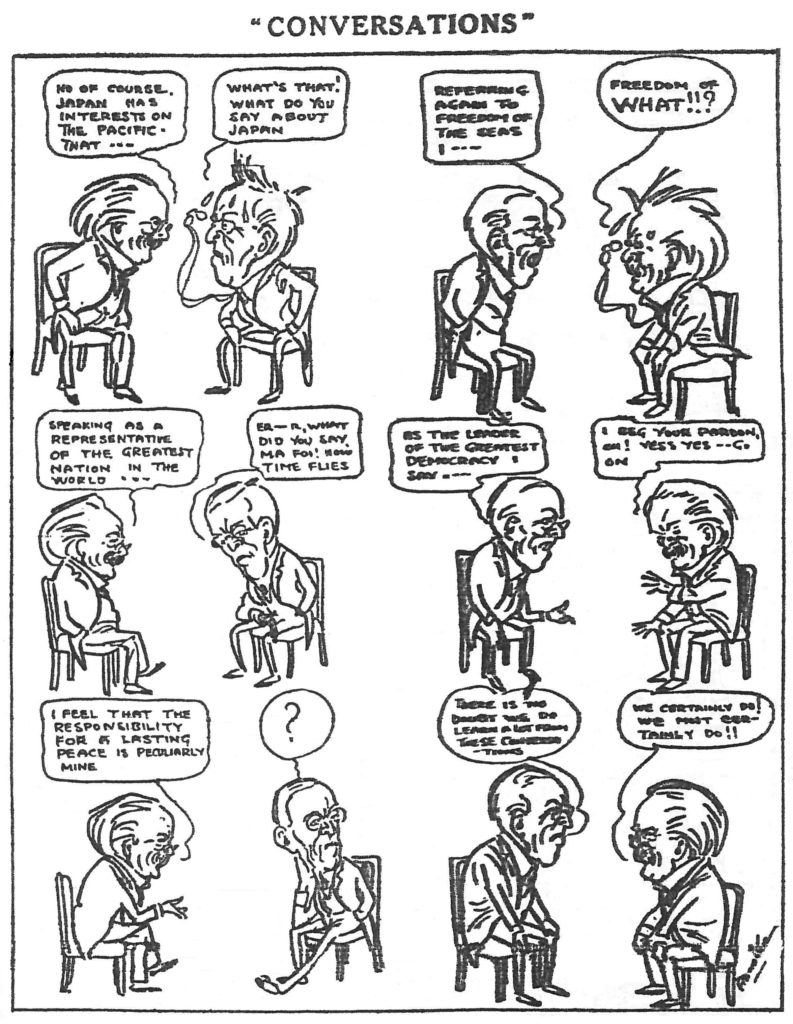
Figure 4: Conversations
In “The One Man for the Job” (Figure 5), our reoccurring conference leaders once again misunderstand each other’s intentions, to reveal once again their own sense of self-importance. There is a clear anti-politics message in most of these cartoons. Fitzmaurice began the conference with great hope and little cynicism.
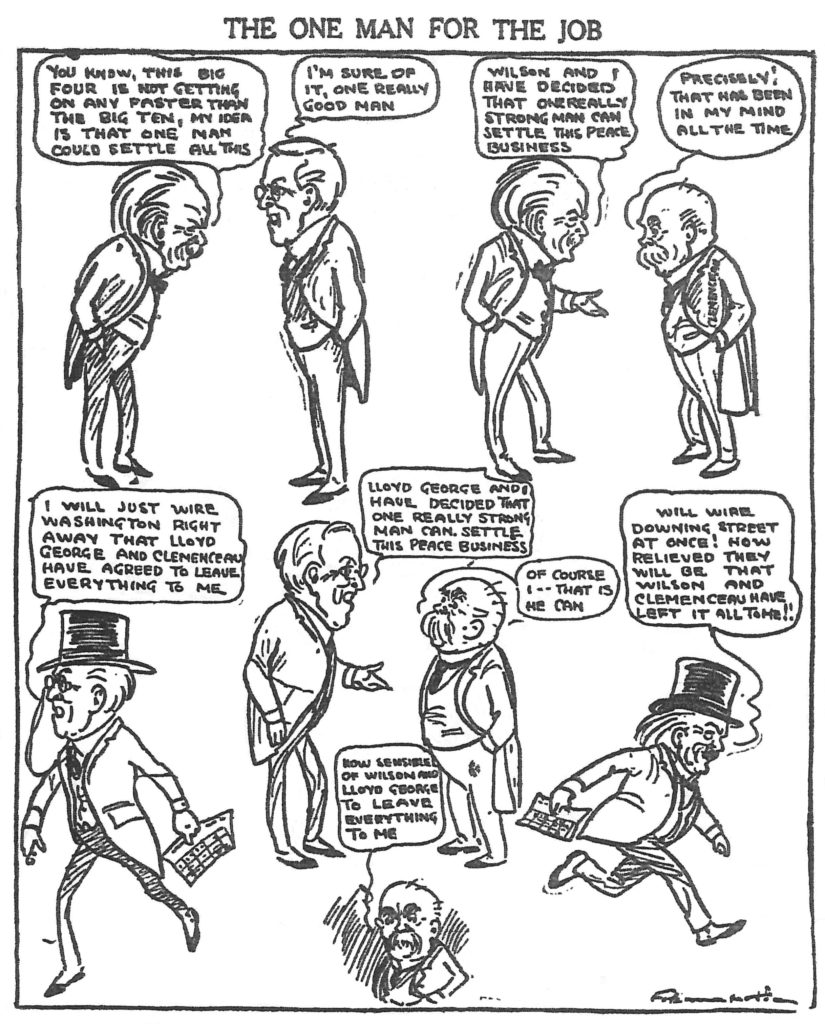
Figure 5: The One Man for the Job
But within a couple of months his images reverted to the anti-politics position that had grown out of the wartime sacrificial mindset. To Fitz, a just peace was possible, but only if elected politicians were not involved.
By the early spring Fitz joined others in the press to express frustration with the slow pace of negotiations at the Paris conference. In “A Day at the Peace Conference” (Figure 6), readers are returned home to look in on a number of humorous male conversations about the situation in Paris. “I see they are taking moving pictures of the Peace Conference,” offers our first everyman in what appears to be a gentleman’s club. “Why moving?” quips his companion. Directly below we see men at a bar presumably drinking “near beer” or some low alcohol beverage as prohibition was in force. “Well!! I suppose they will come to some decision about peace some day,” one man declares. “What grounds have you for that rash assertion?” cynically replies the other.
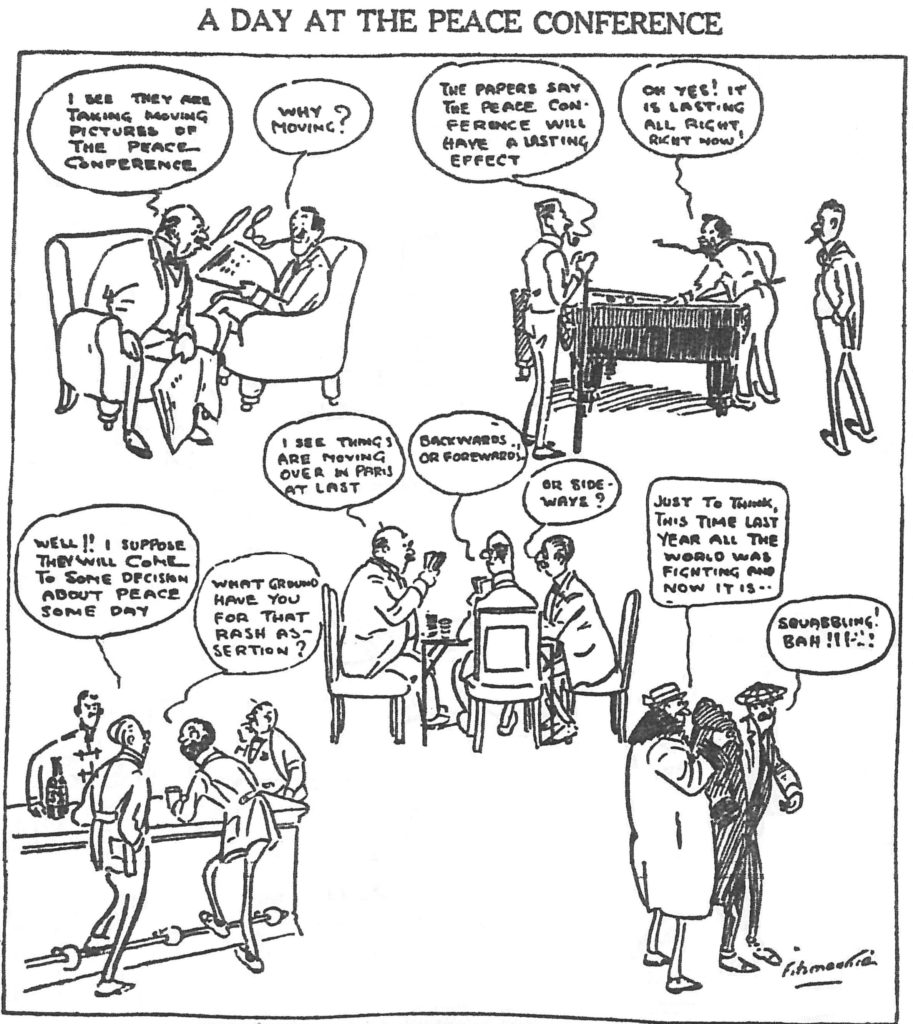
Figure 6: A Day at the Peace Conference
Delay became the most repeated criticism of the peace process in the minds of Fitzmaurice and others in the press. And now in full anti-political stride, Fitz’s images showed little empathy for the challenges facing leaders in Paris. In “Burning Up the Road” (Figure 7), our peacemakers are motoring down the “Peace Road” making minimal headway as the storm clouds of delay and resulting “Public Unrest” bear down on them. In this image Fitz presents Clemenceau and Wilson as having the greatest separation in interests, bound as they were to immovable positions. In contrast, Fitzmaurice’s favourite, Lloyd-George, is shown as the most practical of the three.

Figure 7: Burning Up the Road
Once the conference leaders turned in late April to concentrate on the specific treaty terms for Germany, Fitzmaurice abandoned the Big Three and focussed on German reaction and intransigence. Margaret Macmillan recounts the disparate final two months leading up to the signing of the Treaty of Versailles on 28 June 1919. When Germany received the peace terms for review on May 7, the German delegation exploded in anger and recrimination at what they saw as an overly harsh set of demands. German officials, led in Paris by the Foreign Minister Ulrich von Brockdorff-Rantzau, had placed too much stock in the guilt-free application of Wilson’s Fourteen Points. The terms presented on May 7th contained few of those general principles and much more of the punishing revenge in the form of territory, moneyed reparations, and guilt that was advocated by Clemenceau and the French officials. British Columbian readers of the Province learned that Germany intended to reject the peace terms because they would lead to “the economic destruction, political disorder and moral degradation of the entire German nation, not only for the present, but also for still unborn generations.” As the German delegation hurried to craft a formal response and set of counter-proposals, support for the treaty terms in some Allied quarters disintegrated. Many British, American, and even British colonial officials and commentators feared the consequences of a weakened and vulnerable Germany – the spectre of bolshevist revolution led the way, but more material concerns were raised regarding European trade and diplomacy without a functional Germany. The list of critics grew daily. For his part, the ever-practical Lloyd-George worried about the domestic political consequences of a harsh peace – British opinion had begun to turn towards moderation in dealing with Germany – and the British leader now urged a softening of the peace terms. But both Wilson and Clemenceau, the former stubbornly committed to seeing the process through and the latter representing generational French trauma at the hands of Germany, dug in their heels.
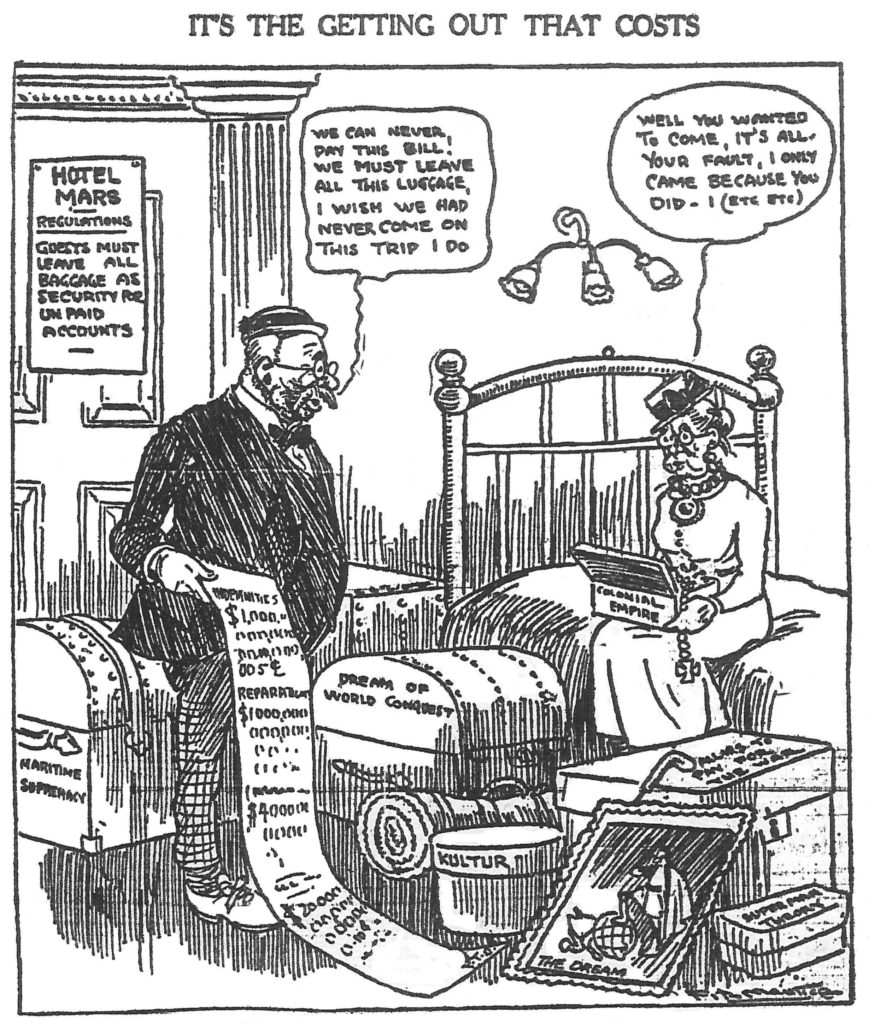
Figure 8: It’s the Getting Out that Counts
A couple of events turned the tide against moderation towards Germany. First, German naval officers decided, apparently impulsively and to perform an act of German honour, to scuttle the German naval fleet detained at Scapa Flow in the north of Scotland on June 21 1919. The act was interpreted by most as a breach of faith, particularly British officials who now became more determined to impose strict controls on Germany. The other development was the disintegration of authority, the resulting political chaos, and the disappearance of a coherent opposition to the treaty terms in Germany itself. German leaders were divided about the efficacy of signing the peace terms; officials on the political right, including the military, were defiantly against capitulation, while an eclectic collection of leftist and centrist leaders urged agreement to the terms as the best available outcome. By mid-June, deadlock over the issue led to the resignation of the new German government and Brockdorff-Rantzau, the head of the German delegation in Paris, simply quit. Germany’s will to oppose the treaty all but evaporated.
Fitzmaurice depicted the events leading up to the signing of the Treaty of Versailles in a series of images that took a hard position against Germany. The cartoon “It’s the Getting Out that Costs” (Figure 8) began this series of images in early May, two days before Germany received the peace terms. Here we see the allegorical Mr. and Mrs. Germany trapped in the “Hotel Mars,” named after the Roman god of war. Mr. Germany and his wife, who represents Germany’s colonial empire, cannot leave the hotel where they have waged war until they pay their bill – defined here as indemnities and reparations. Fitzmaurice used this rhetorical setting of Germany trapped until they pay the Allied terms repeatedly through this period. “All They Have to do is Get Out” (Figure 9) is a variation on the metaphor. Multiple allegorical Germanys are pictured as resistant circus animals caged by “Allied Terms.” Fitzmaurice expressed the hope of most that Germany would be punished severely for its actions during the war. There is no sober second thought, reasoned counter-argument, or nuanced view of the consequences of recrimination in these images.
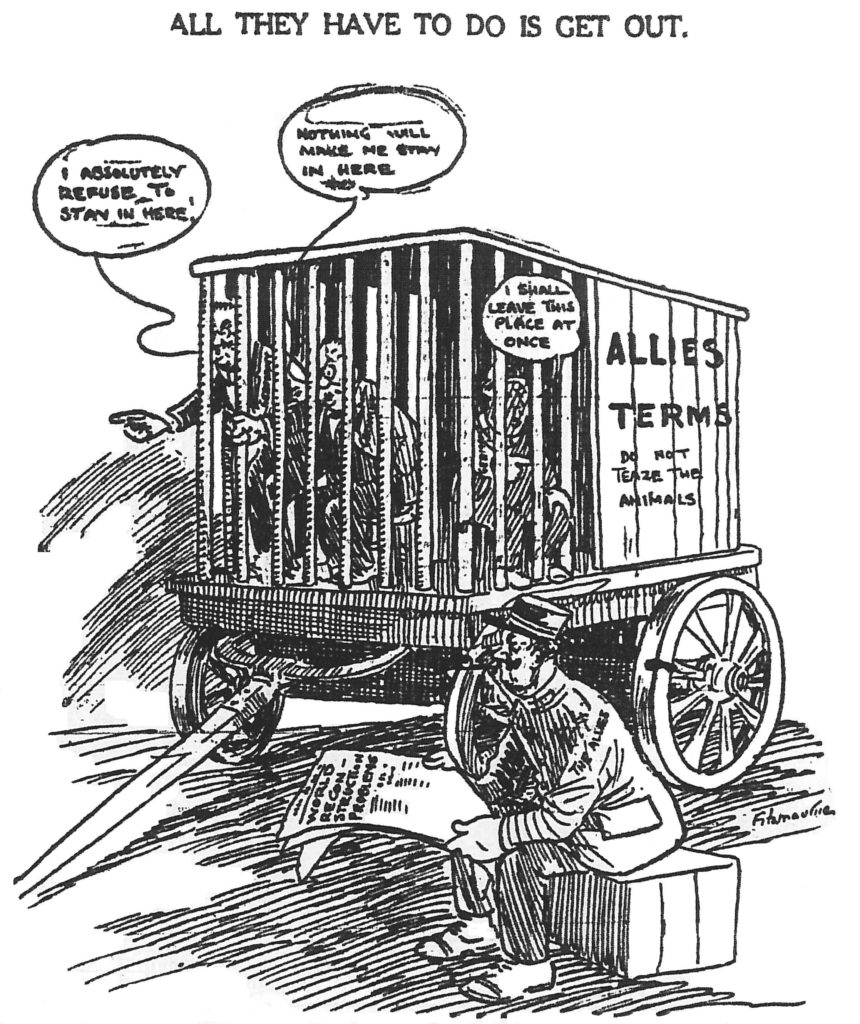
Figure 9: All They have to do is Get Out
In “Germany Gets the Idea All Right” (Figure 10), Fitz pulls no punches. Under the guillotine blade titled Peace Terms, Germany still refuses to accept its responsibility or fate.
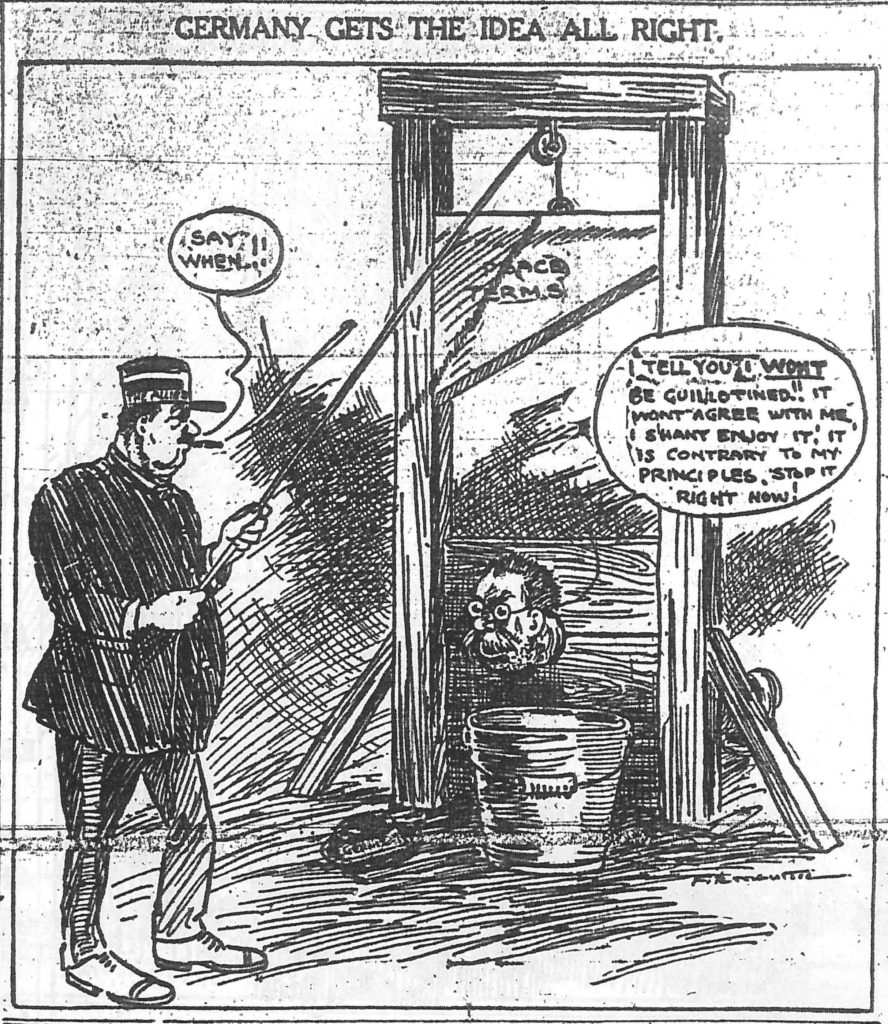
Figure 10: Germany Gets the Idea All Right
All of Fitzmaurice’s images strongly endorsed the argument that harsh and retributive terms against Germany were justified and appropriate. While we can never be sure of the degree to which these cartoons reflected local opinion, it is likely that most readers would have agreed with him. Certainly the newspaper carried the publically articulated worries of American and British commentators in its news reporting – both its American and British syndicated news services raised strong reservations on the severity of the treaty terms. However, a survey of the local newspaper editorials in May and June 1919 show unequivocal support for harsh retribution. The Province’s editorial response to Germany’s counter-proposals probably typified local opinion:
It is not enough to say that Germany has made it clear to the world that she is unrepentant and unashamed. Germany not only assumes that she has done no wrong but that she had not been beaten. She impudently proposes herself for membership in the League of Nations, formed to protect the world from Germany and other enemies of mankind. She asks her victorious foes to make her the trusted custodian of her former colonies. She invites the Allies to pay the cost of German ravages in the countries she has devastated, and to wait on the promise of some repayment after six years. She invites France to get along without the coal mines that were destroyed by the fleeing Germans, while Germany retains her coalfields untouched. If Germany had succeeded in conquering Europe, she might have demanded more, but she is claiming at least as much as she could ask if the end had been a draw.
Fitzmaurice’s cartoons supported local opinion that, if anything, the proposed peace agreement was not harsh enough. Germany was getting off easy.
On the eve of the signing of the Treaty of Versailles with Germany, Fitzmaurice published “Bound by a Scrap of Paper” (Figure 11). This image encapsulates the widespread doubt that any treaty agreement would contain German ambitions. Bound by the treaty, the allegorical Germany remains uncooperative. Mr. World, who in Fitz’s universe usually represented both the recipient of international action and the source of clear-sighted wisdom, says what many feared: “I suppose he will stay in that just as long as it will take him to get out….” Missing from this is the glaring contradiction within Fitzmaurice’s messages – for months Fitz championed harsh terms on Germany as the only way to a just peace; but once the Treaty was signed, Fitzmaurice doubted its effectiveness.
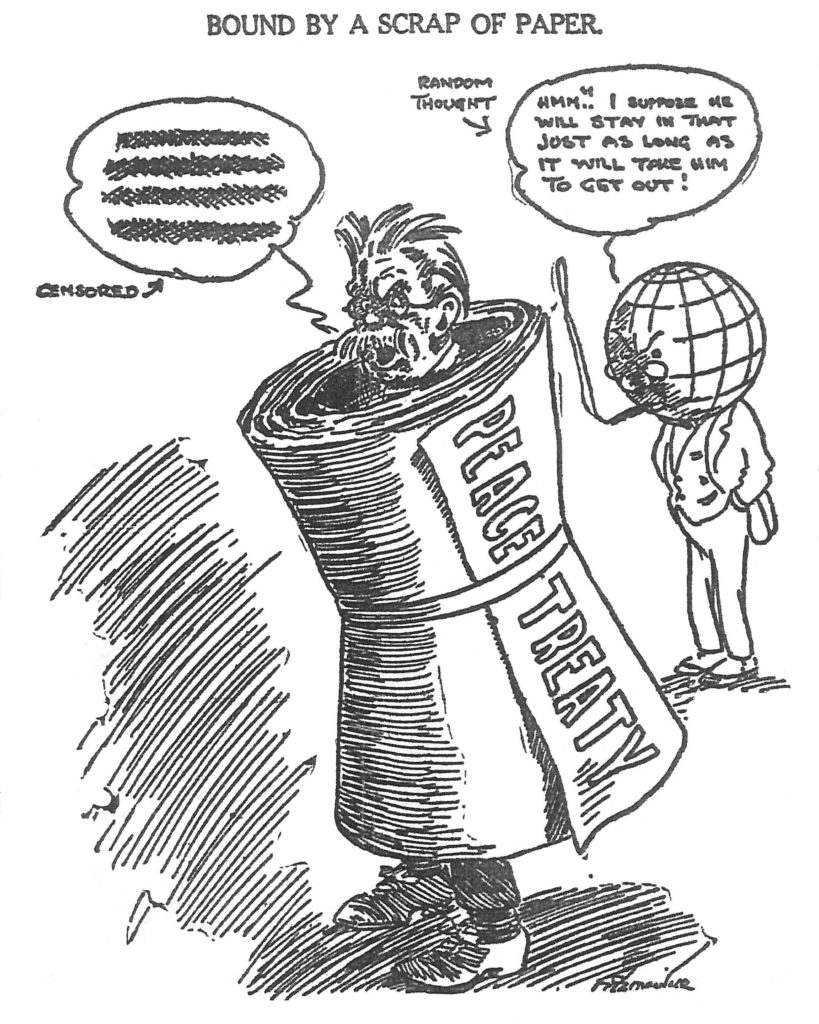
Figure 11: Bound by a Scrap of Paper
GETTING BACK TO NORMAL
At the same time Fitzmaurice was documenting events in Paris, he chronicled the imposition of peace at home. And in typical Fitzmaurician fashion, the transition to peacetime proved to be a losing battle. The challenges of the post-war homefront were as formidable as those during the war. These included a severe post-war economic downturn that combined the persistence of wartime inflation, industrial slowdowns, and high levels of unemployment – all under the specter of tens of thousands of returning soldiers from Europe. Fitzmaurice nicely communicated the ambivalence of this turbulent period with humour and an authentic voice.
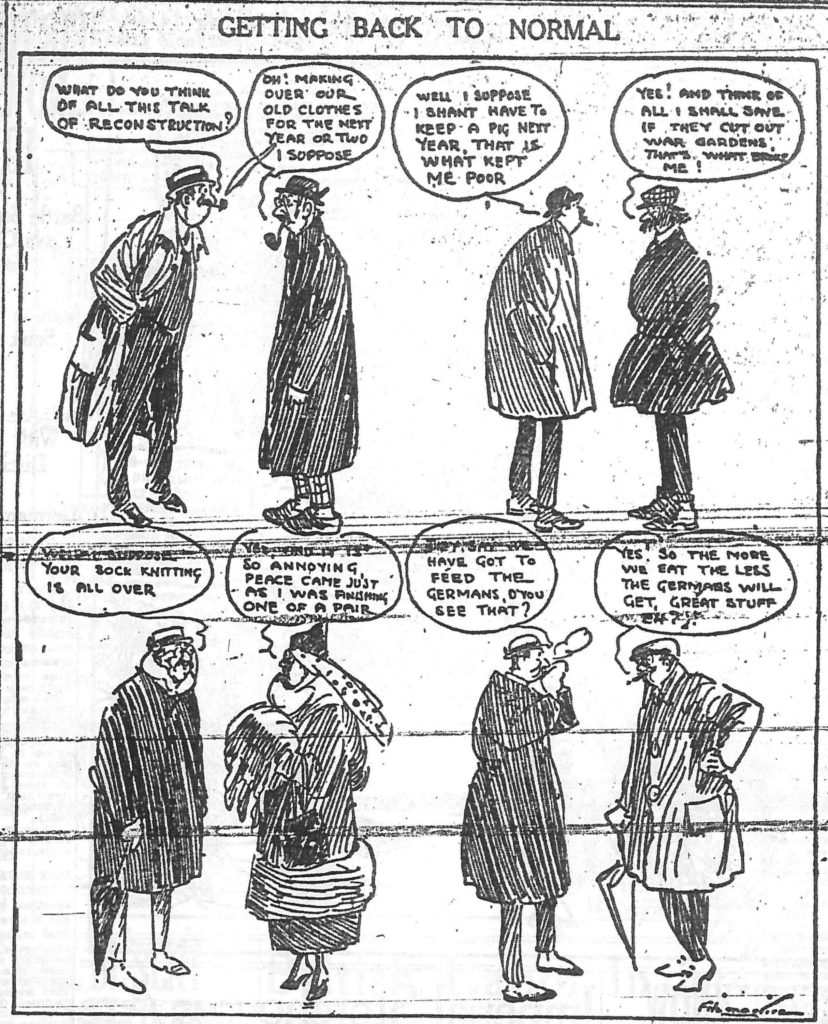
Figure 12: Getting Back to Normal
In the aptly titled cartoon “Getting Back to Normal” (Figure 12), published only two weeks after the Armistice, Fitzmaurice plumbs a set of ironies that came with the end of the fighting overseas. A middle-class everyman in the upper right vignette declares, “Well I suppose I shan’t have to keep a pig next year. That is what kept me poor.” His acquaintance concurs: “Yes! And think of all I shall save if they cut out war gardens. That’s what broke me!” the opposite sentiment can be seen in the lower left where a gentleman inquires of a well-dressed matron, “Well I suppose your sock knitting is all over?” “Yes,” she replies, “and it is so annoying peace came just as I was finishing one of a pair….”
Readers in 1919 could always depend on Fitzmaurice to reflect the unintended consequences of war and peace on the homefront. A close reading of his post-war cartoons reveal a complexity and ambivalence to middle-class reaction to the war’s end. But some areas of middle-class life, such as the domestic gender economy, were unshakably constant.
The cartoon “Ladies! Now is Your Chance!” (Figure 13) appeared at the end of January 1919. “Oh look Ethelbert!” exclaims the mother of a soldier in the upper left image, “It says here that the British Gov’t is selling off siege Howitzers at slaughter prices!” Her husband plays the eternal role of the hapless household banker: “Hadn’t we better wait till Willie comes home. Perhaps he will bring one.” Similarly in the centre frame a woman declares “I heard Alec, that submarines can be had for less than half price. Fancy!” “No dear,” husband Alec replies, “I don’t fancy.” The absurdity of comically attaching the serious issue of demobilization, which was a key negotiation point in Paris, to the gendered stereotypes around women’s addiction to shopping was quintessentially Fitzmaurice – the mashup of the serious with the then-banal. Of course, we take gender inequities and demeaning gender stereotyping very seriously today, but in Fitzmaurice’s era such patriarchal views were common. Fitz would continue to find humour in the middle-class ‘battle of the sexes’ with the expansion of consumer capitalism in the 1920s.
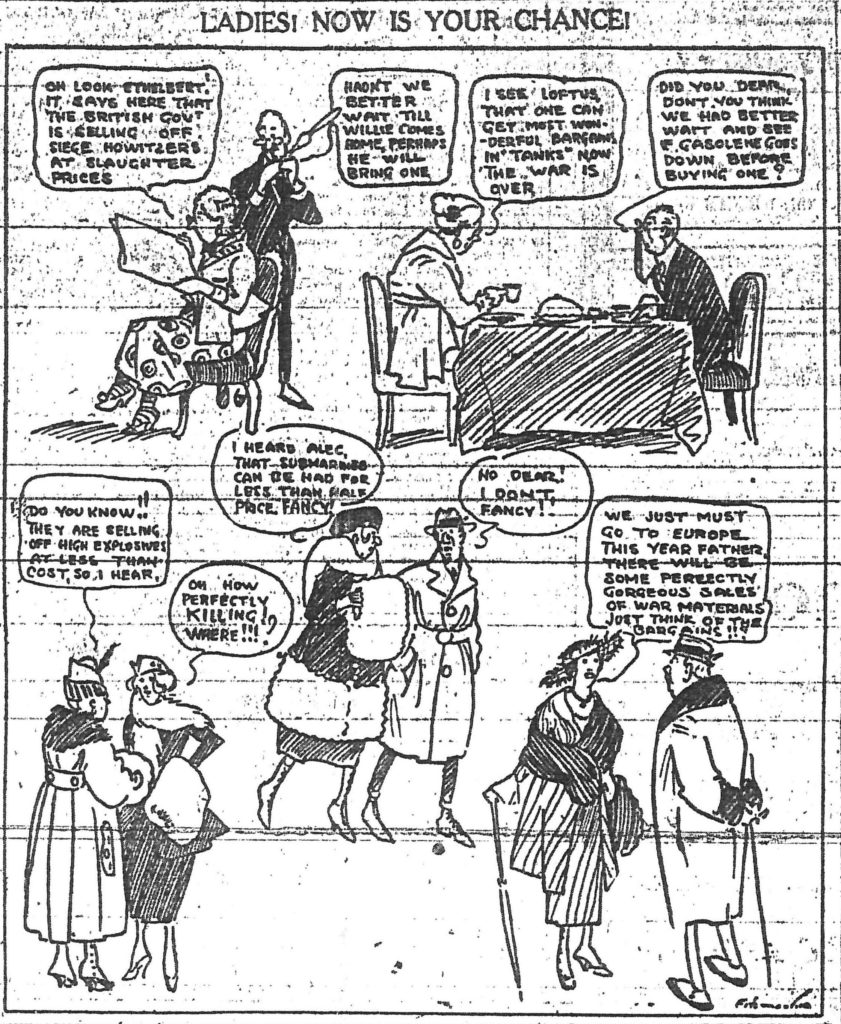
Figure 13: Ladies! Now’s Your Chance!
At the end of it all, Fitzmaurice yearned for a daily life in Vancouver that was happily isolated from the complicated events of international politics. To Fitz, the return to normalcy meant enjoying the sights and sounds of British Columbia and a retreat into the calm of west coast life. Most of his cartoons in 1919 reflected this hope.
“Gardening Leaves No Time for Other Worries” (Figure 14) from the end of March 1919 follows a backyard conversation between two everymen, as one relates information from the newspaper about world affairs. The humour here is built through bad puns, cleverly delivered. “It looks as if the fruits of victory will be lost,” says the first man, referring to the slow and disappointing progress of peace talks in Paris. “There is always a danger with Fruit…” replies our backyard gardener as he pushes his wheelbarrow towards the fruit tree. Once there, the visitor continues unabated, “All this ‘Red Terror’ should nipped in the bud!” To which our gardener reacts, “There won’t be any buds to nip if I don’t get after those tent caterpillars.” The lack of any concrete interaction between the two characters creates a wry and delightful interchange for readers. These cartoons stand the test of comic time.
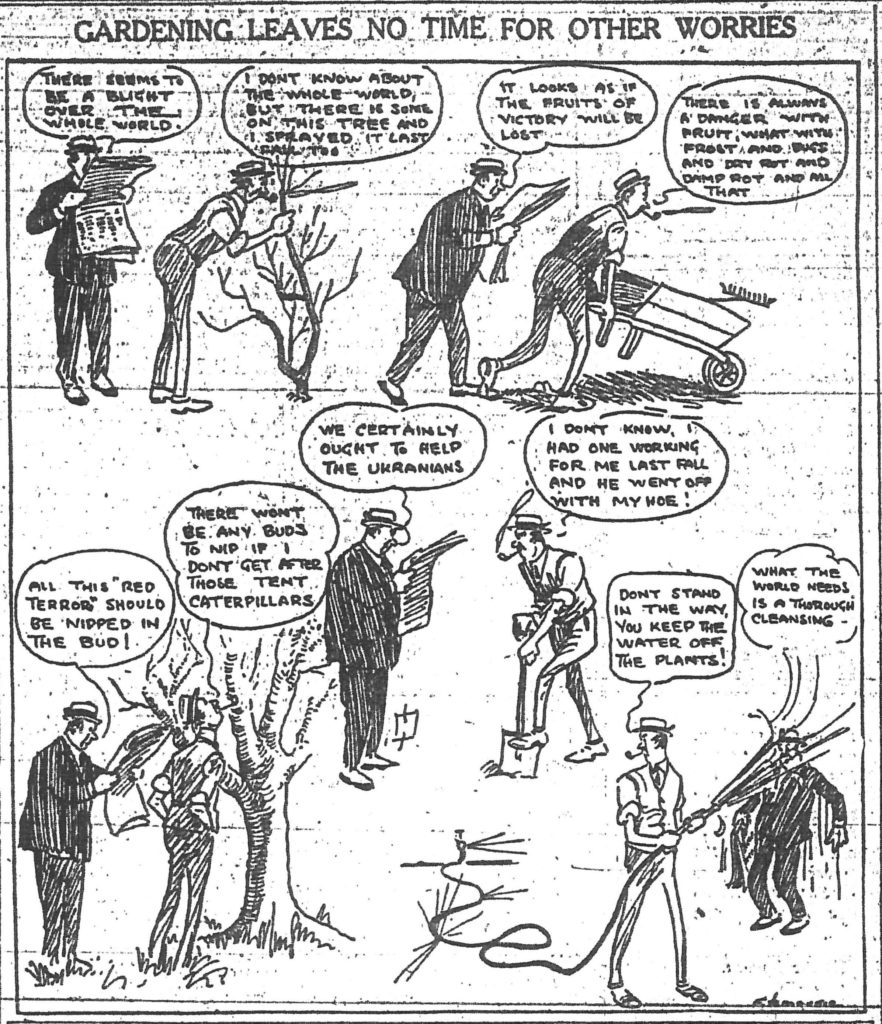
Figure 14: Gardening Leaves No Time for Other Worries
CONCLUSION: FITZ AND THE GREAT WAR
The cartoons drawn by James Fitzmaurice during, and shortly after, the First World War offer modern readers a variety of images on an inestimable number of historical themes. All cultural traces from the past are rich in interpretive possibilities – that is what makes the study of history a ‘living discipline’ – but visual evidence such as cartoons are particularly thick with ideas because of their accessibility and their levels of intended and unintended meanings. The images chosen for this study only represent a part of Fitzmaurice’s overall wartime output. In addition to the propaganda cartoons on Germany, Britain, and the United States, as well as the images that mocked the challenges of urban dwellers on the home front, Fitz occasionally turned his pen to themes as eclectic as labour disruptions, Christmas shopping, the popularity of moving pictures, municipal politics, and, of course, the weather. And within all the images he produced can be found a plethora of meanings, many of them unconnected to the context of war. Fitz was an all-purpose cartoonist and illustrator, a fact that should never be forgotten.
However, without doubt the war was the overwhelming presence in Fitzmaurice’s cartoons between 1916 and 1919. Even his seemingly innocuous images on local weather conditions often made ironic references to the conflict in Europe – the Great War hovered like an allegorical storm cloud in all of his cartoons. When we try to sum up the historical significance of Fitz’s wartime output two broad questions emerge. First, what do Fitzmaurice’s cartoons say about the war and the experience of war on British Columbians? And second, what was the effect of the Great War on the life and work of Fitzmaurice? Below are some answers to these two questions.
As this study has tried to show, Fitzmaurice’s cartoons can tell us a lot about the British Columbian experience of the First World War. Whether intended or not, the images do provide a reflection of attitudes at that time. That is not to say, however, that all values and all British Columbians were represented by Fitzmaurice. Hardly. And here we can turn to the long-established analytical categories of race/ethnicity, gender, and class to uncover those exceptions. For instance, we know from the work of Canadian historians that many Canadians of German ancestry, and other central and eastern Europeans in Canada, began the war with allegiances to the central powers, but soon hid from sight as the conflict unfolded and intolerance grew. As a war propagandist, Fitzmaurice made no effort to reflect the views of ethnic minorities who opposed the war. Not once did the cartoonist tackle the issues around wartime ethnic divisions or conflict in Canada. Fitz was a British-Canadian, as were his ideal intended readers, and his work clearly reflected that.
Fitzmaurice cartoons were also drawn entirely from a male perspective. Women’s attitudes toward the war were complex and represented a strong diversity of opinion, but you would never have known that by reading a Fitzmaurice cartoon produced during the war. The women who inhabited Fitzmaurice cartoons were simplistic props meant to provide the primary male characters with motivations and reactions. While some – perhaps many – of Fitz’s messages undoubtedly reflected the views of many women readers, that would have been an accident. There was never any attempt by the cartoonist to present a woman’s perspective on the war.
Finally, Fitzmaurice’s cartoons were firmly class-bound. His home front images, particularly those featuring the west coast Everyman, captured the world of the comfortable urban middle class, complete with class-defined lifestyle, motives, morals, manners, and elements of speech. The majority of British Columbians, even Vancouverites, would not have seen themselves in these cartoons, as they lived outside these middle-class ideals and social practices. The rare moments when Fitz included working-class or rural characters in his cartoons, they were positioned as peripheral to the central middle-class figures with whom the readers were meant to identify.
But even as narrowly defined as they were, Fitzmaurice’s cartoons can still tell us a lot about British Columbia’s experience during the Great War. For one, the way in which his images developed over the course of the war speaks to the evolution of commitment for those living on the home front. When Fitz arrived in Vancouver in the summer of 1916, the bloom of wartime excitement was off the rose; dedication to the war was hardening into the all-or-nothing commitment that would accompany the total war effort on the home front. His cartoons are invaluable in capturing the organic growth of that quite novel total war mindset. But also reflected within his frames is the war fatigue that deepened at the end of 1917. Growing concerns about food and fuel shortages, rising prices, and worries about the direction of the war crept into his cartoons in the last year of fighting. These doubts, of course, were never pronounced too loudly. As a nuanced tool of propaganda, Fitzmaurice saw his role at the newspaper to support the war effort, even in the darkest times, but also to give voice to the challenges along the way. To this end, Fitz articulated the material difficulties and sacrifices made by citizens, but never the ultimate sacrifices – never the death of fathers, husbands, and sons – suffered by the Everyman and Everywoman on the home front.
Above all, Fitzmaurice’s wartime cartoons can show modern readers the powerful ideology of sacrifice that grew out of the experience of war. From our modern perspective, this was the most formative, most salient element to life on the home front. And every one of Fitzmaurice’s home front cartoons tapped into the ideology of sacrifice on one level or another. For instance, Fitz’s dozens of images promoting war bonds, wartime charities, and other efforts were constructed upon the ubiquitous sense of guilt that permeated life on the home front. All of his cartoons reflected the demands of self-sacrifice, but we need to be reminded that Fitz was a major contributor to that mindset – his cartoons were a key vehicle through which war guilt travelled. And as mentioned earlier, the guilt-sacrifice mindset was a formative mass consciousness that would shape the world for decades to come.
Conversely, the Great War also profoundly shaped the life and work of James Fitzmaurice. The cartoonist who entered the war was a derivative artist who borrowed liberally from better known cartoonists in Canada and the United States to produce single frame works that used a traditional symbolic visual language based more in the 19th century than the 20th. However, the fabricating power of total war, even in as remote a locale as Vancouver, released material demands and psychological forces that transformed the city and the region into a home front. British Columbia’s favourite cartoonist was transformed as well. With a steady diet of anti-German propaganda cartoons, along with images to support Britain and question the actions of the United States, Fitzmaurice initially joined the war effort in traditional and predictable style. However, Fitz quickly began to experiment with new ideas and forms in his cartoons on the home front. These modern multi-framed cartoons were filled with non-allegorical everyday characters who found themselves caught in the reality, and usually the absurdity, of wartime life. Fitzmaurice became a more original cartoon artist, a better humourist, a distinctive voice. After the war, Fitz would continue when needed to produce single frame front page political cartoons, but only rarely ones that relied on stock allegorical characters like Uncle Sam or John Bull. It is true that editorial styles everywhere had changed by this time, but Fitzmaurice’s style became his own. And his post-war slice-of-British Columbian-life cartoons in the Province would continue the innovative creative patterns first worked out during the war.
The war also boosted Fitzmaurice’s reputation as an authentic voice on the British Columbia home front. As the conflict came to a close and for several years after, Fitz made public appearances to talk about the war, perform so-called “chalk talks,” and he did so, at least until their demise, with Horace the pig and Annie the goat in tow. The cartoon with the title, “Rotarians See Many Big Bugs – And Horace and Annie” (Figure 15), documented one such public appearance in late 1918. Fitzmaurice was not a comfortable public speaker, as the caption suggests, and at this Rotarian luncheon in his honour, Fitz took a moment to say a few words about his life and work:
My father asked me when I was a boy what course of life I intended to follow – what work did I propose taking up. I said that I wanted to be an artist. My father being the sensible man said: ‘All right Jim, we’ll arrange it for you.’ Some days after I found myself on the way to Canada and landed on a ranch forty miles south of the CPR where I studied art for eight years doing work about the place…. It’s a lonely life. A cartoonist on a paper has the life of a dog. In fact, he is like a dog among a large number of felines; or like a cat, I should say, among a large number of dogs….
After these typical Fitzmaurician tongue-in-cheek comments, the cartoonist offered up some more serious observations about the war and the “place cartoons occupy in the work of the press and of the important national service which a cartoonist sometimes may perform.” And then he added this revealing final comment:
Sometimes a fellow really feels sad when he is busy producing something funny. The task of getting funny at any given hour, every day, is sometimes most difficult.
On the basis of his wartime contributions to public morale, Fitz was one of a handful of British Columbia home front personalities who became forever tied in the public mind to the Great War. But life and work marched on. By the end of 1919, and until his sudden death in 1926, James Fitzmaurice turned to other political concerns, and the complaints of his Vancouver Everyman turned to the important issues of the costs of women’s fashions, automobile congestion, backyard gardening, and the always dependable deluge of rainfall on the west coast of British Columbia.
